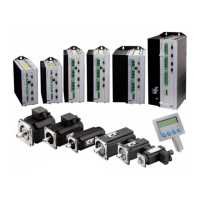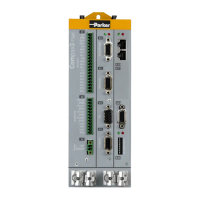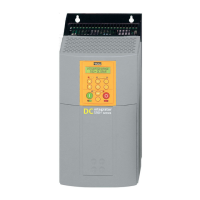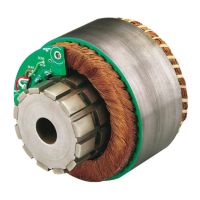Parker EME
Setting up Compax3
192-120113 N08 C3I12T11 - December 2010
Voltage decoupling
In the current control path there is a velocity and current proportional voltage
disturbance variable, which must be compensated by the current loop. Due to
limited controller dynamics, this disturbance variable can not always be entirely
compensated by the current loop. The influence of this disturbance variable may
however be minimized by activating the voltage decoupling.
Load control
If a second position feedback is available for the acquisition of the load position,
the load control can be activated.
For more detailed information on the load control see device help for
T30/T40 devices in the setup chapter Compax3\\load control.
Luenberg observer
In this chapter you can read about:
Introduction observer ..................................................................................................... 217
Signal flow chart Luenberg observer .............................................................................. 218
Introduction observer
A high signal quality of the actual signal value is of high significance in the control
of the motor velocity n or the motor speed v. By means of oversampling and
transmitter error compensation, a high-quality position signal can be produced for
speed determination. As a rule the motor speed is determined by numeric
differentiation of the motor position. In this case the quantization noise QvD of the
digital speed signal depends on the quantisation Qx of the position signal and the
sampling time TAR of the digital control loop:
Quantization speed signal QvD
The quantisation of the speed signal is inversely proportional to the sampling time
TAR. Hence the demands for the lowest possible sampling time and the minimum
quantization noise oppose each other in the determination of speed by numeric
differentiation. The noise superimposed by the digital speed signal may be reduced
by the low-pass filter, however this is always at the cost of the stability margin of
the digital control loop. An alternative method is to determine the speed by
integration of the acceleration. The dependence of the quantisation noise QvD of
the digital speed signal on the quantisation Qx of the position signal and the
sampling time TAR of the digital control loop is shown by the following correlation.
Quantization speed signal QvI
The observer technology offers the advantage that the velocity can be calculated
with the aid of integration. The idea of the observer principle is to connect a
mathematical model of the control path parallel to the section observed and with
the same transfer behavior. In this case, the controller also has the intermediate
variables (state variables) of the control path available. However in the presence of
model deviations (in structure or parameters), different signal values occur
between the model and the control path. For this reason, the technique cannot be
employed in this way in practice. However, the model contains the measurable
output signal of the control section as a redundant quantity. By comparing the two
variables, a tracking control can be used to adapt the model state variables to the
state variables of the control path. As the model deviations have become minor in
this case due to the simple mechanical drive train, the observer now has an

